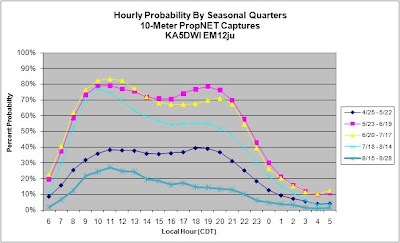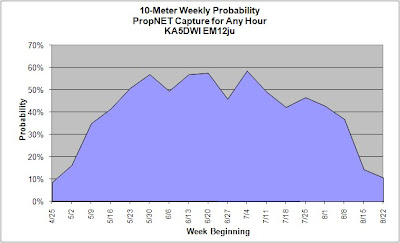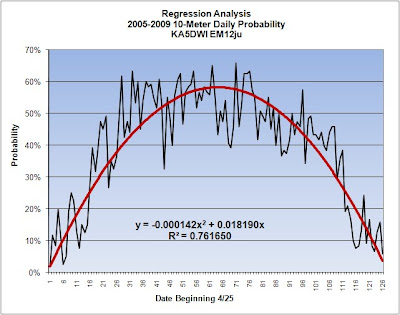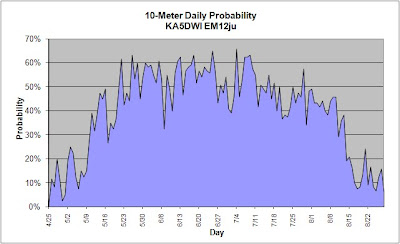.bmp)
.bmp)
.bmp)
Hello everyone,
I can't wait!!
We are 3 weeks away from the beginning of the season.
This is my last post on Spring/Summers Es characteristics. All future posts involve what to look for during the season.
The first chart displays hourly probability during the season along with the actual number of captures for those active hours. It shows a clear correlation with only a minor shift in the late afternoon. I did this chart to show that opportunity reflects into activity.
The next chart shows distance characteristics. It isn't a smooth chart, but shows that for most cases your best opportunity for DX is the late afternoon time frame. This is when you have daylight for a wide spectrum of the world affected by Es (Northern Hemisphere).
The final chart should say seasonal quarters, plus the final 2 weeks. It shows probability of Es for any hour in 4 week segments beginning April 25. Note a clear dual diurnal pattern in each segment. The end of the season shows to be mostly morning active. Also, the final 2 weeks (August 15-August 28) are shown to indicate the true end of the season.
Again, I entertain you comments and questions.
73's
Art KA5DWI


